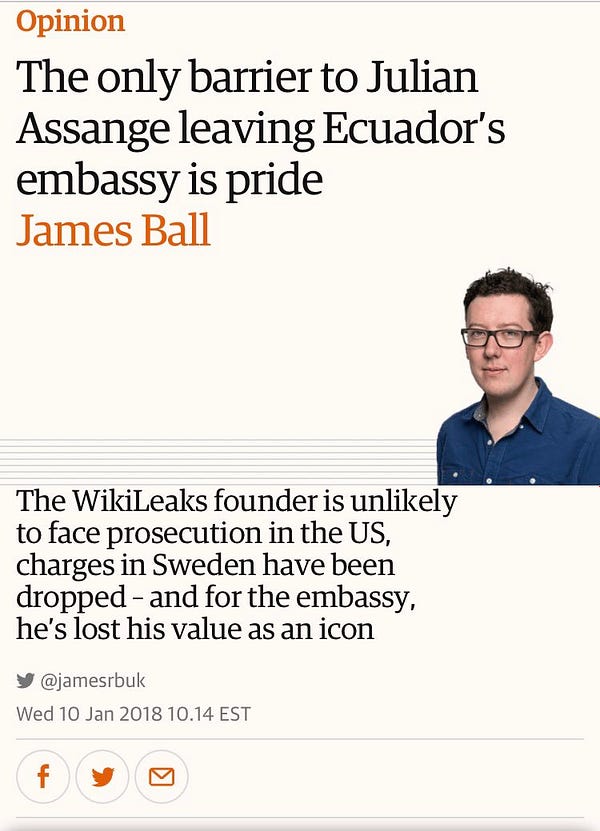CIA plan to poison Assange wasn’t needed. The US found a ‘lawful’ way to disappear him
The reality of Assange’s persecution is far worse than even the picture painted of a thuggish, power-mad CIA bent on vengeance
A Yahoo News’ investigation reveals that, through much of 2017, the CIA weighed up whether to use wholly extrajudicial means to deal with the supposed threat posed by Julian Assange and his whistleblowers’ platform Wikileaks. The agency plotted either to kidnap or assassinate him.
Shocking as the revelations are – exposing the entirely lawless approach of the main US intelligence agency – the Yahoo investigation nonetheless tends to obscure rather than shine a light on the bigger picture.
Assange has not been deprived of his freedom for more than a decade because of an unimplemented rogue operation by the CIA. Rather, he has been held in various forms of captivity – disappeared – through the collaborations of various national governments and their intelligence agencies, aided by legal systems and the media, that have systematically violated his rights and legal due process.
The reality of Assange’s years of persecution is far worse even than the picture of a thuggish, vengeful, power-mad CIA painted by Yahoo’s reporting.
More than 30 former senior officials, who either served in the US foreign intelligence agency or the Trump administration, helped to piece together for Yahoo the various components of the CIA’s plan. They show that the agency considered two main options for dealing with Assange in addition to then secret moves laying the groundwork for prosecuting the Wikileaks founder in the US courts.
One plan was to kidnap Assange from the Ecuadorean embassy in London, where he had been seeking political asylum since 2012.
The aim was to smuggle him to the US – violating the sovereignty of Ecuador and the UK – in an operation that would have had all the hallmarks of “extraordinary rendition”. That was the illegal procedure the US used after 9/11 to abduct suspects in the “war on terror”, usually so they could be sent to “black sites” where they were tortured and held without judicial oversight.
The other CIA proposal was to assassinate Assange – or, perhaps more accurately, commit extrajudicial murder to silence him once and for all. Poisoning him was reportedly one of the methods considered.
These scenarios need to be borne in mind when we cast our minds back to 2012, to the moment Assange decided to seek sanctuary in Ecuador’s embassy, fearing the wrath of the US at his exposure of its war crimes in Afghanistan and Iraq.
Not a single corporate journalist gave credence to his concerns. In fact, they ridiculed them. These latest revelations confirm what was obvious to many of the rest of us: Assange had very good reasons indeed to seek political asylum.
Desire for revenge
Let us examine that bigger picture obscured by the reporting of the CIA’s plan.
1. The agency’s much greater interest in the Assange case – and its more openly hostile attitude towards him – were a result of Wikileaks’ release of parts of a cache of secret files on the CIA’s hacking capabilities known as “Vault 7”. The agency, considering it “the largest data loss in CIA history”, was deeply humiliated by the exposure.
The misleading impression created by the Yahoo investigation is that until 2017 a standard legal process was being pursued against Assange that only turned rogue after the Vault 7 release, when the CIA wanted vengeance and to intimidate Wikileaks to prevent any further leaks.
In the words of one Trump national security official: “There was an inappropriate level of attention to Assange given the [CIA’s] embarrassment, not the threat he posed in context. We should never act out of a desire for revenge.”
The implication is that, because the CIA’s various extrajudicial plots were never implemented, justice has otherwise been well served in Assange’s case.
But the CIA plans indicate something else entirely. They show that, once the CIA was as infuriated by Wikileaks’ exposure of the agency’s own crimes as the Pentagon, the State Department and the White House already were of theirs, it joined them in getting more actively involved in an existing extrajudicial process meant to finish off Assange and Wikileaks.
‘Don’t you dare’
From the moment Assange’s legal troubles began in late 2010 – when two Swedish women were reported to have launched allegations of rape – nothing followed a standard procedure. As I have previously documented, Assange’s case was treated in exceptional ways by Sweden, the UK, Australia and, always lurking in the background, the US.


Swedish police, the country’s media and a second prosecutor all meddled in a case the main prosecutor had already ruled did not involve a criminal offence. The testimony of one of the women – who had been encouraged to go to the police by the other – was effectively hijacked and turned into a rape allegation, seemingly against her wishes.
Inexplicably, Interpol issued a Red Notice for Assange’s arrest, usually reserved for terrorists and dangerous criminals, shortly after Swedish officials had approved his travelling abroad.
In the UK the courts approved an extradition warrant for Assange that had been issued without any Swedish judicial authority. The ruling set such a terrible legal precedent that the agreement on which the extradition was based was amended shortly afterwards to ensure such a ruling could not be made again.
Once Assange fled to Ecuador’s embassy, the UK government surrounded it with huge numbers of police, at great public expense. For a while, government ministers threatened to tear up diplomatic protocols established in law by sending police in to arrest Assange on foreign soil.
A Freedom of Information request shows Britain’s state prosecution service pressured Swedish prosecutors not to come to London to interview Assange through 2010 and 2011, thereby creating the embassy standoff that began a short time later. Other evidence shows Swedish prosecutors were regularly interviewing suspects in the UK – only in Assange’s case was that made impossible.


British prosecutors destroyed emails relating to Assange to circumvent another FoI request, but the few that survive – by mistake – show it meddling directly in a case it should have had no legal stake in.
In one, as Sweden proposed dropping the investigation against Assange in 2013, UK officials warned: “Don’t you dare”. Another revealing email stated: “Please do not think this case is being dealt with as just another extradition.”
‘Legal’ theatre
This and much more took place before the CIA plans exposed by Yahoo were being hatched in 2017. Two years later, Assange was dragged by London police from the Ecuador embassy in a scenario that echoed the CIA’s plan.
Since then, new, even more irregular “legal” proceedings – either for a supposed minor bail violation or for “espionage” in exposing US war crimes – have kept Assange indefinitely locked up in a London maximum-security prison.
The point here is that the idea that the CIA suddenly tried to interfere in a sound, legal process against Assange is laughable.
Everything about the Assange case from the outset has been extrajudicial – in the sense that there has been no legal basis for the proceedings. It has been “legal” theatre, concealing the brute force of an unaccountable superpower angry and fearful that, in the digital age, its secrets and crimes can no longer be concealed from the public.
What the CIA brought to the table was not some new interest in extrajudicial vengeance – that was at the core of Assange’s treatment from the outset – but the specific extrajudicial tools it excels in, such as abduction and murder.
Ultimately, calmer heads prevailed, even in the Trump administration, understanding that a sham “legal” process would better serve and conceal the war the US was waging against the efforts by Assange and Wikileaks to bring greater transparency to state actions and accountability for state crimes.
The campaign to lock away Assange for life is being pursued as enthusiastically by the Biden administration as it was earlier under Trump.

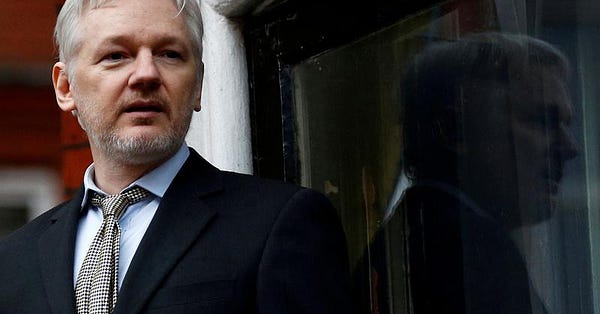
And the UK courts, including the highest in the land, have been actively colluding in this charade of justice.
CIA score-settling
2. Doubtless, we are now learning of the CIA’s plots against Assange in part because there has been a change of administrations. Presumably, some of this is driven by score-settling from disaffected agents against Mike Pompeo, Trump’s CIA director.
The revelations, after all, are not coming from whistleblowers concerned about justice for Assange. They are being mediated through the CIA community, officials with an intelligence agency mindset that views Assange in the same self-serving terms as Pompeo – as “a non-state hostile intelligence service”. Like Pompeo, these officials see Assange as a “transparency terrorist”.
But what is worthy of note is the fact that Yahoo is the news service delivering us these disclosures.
Three newspapers with huge readerships and vast resources, The New York Times, Guardian and Washington Post, all worked closely with Assange on Wikileaks’ early releases, raking in big profits from the earth-shattering leaks he provided.
All three papers should have a vested interest in ensuring that Assange is not extradited to the US and locked away for life on the pretext that his journalism amounts to espionage, as both the Trump and Biden administrations are claiming.
And perhaps most relevant of all, the three newspapers have long records of drawing on their extensive contacts inside the intelligence services, often allowing themselves to be used to peddle misinformation and psy-ops.
Remember, for example, that it was the New York Times’ reporters Judith Miller and Michael R Gordon who became the US intelligence services’ favoured conduit for the weapons of mass destruction deceptions that provided the rationale for the US to attack, occupy and dismember Iraq.
In the UK, the Guardian has been growing ever closer to the intelligence services since it broke with Assange and Glenn Greenwald, the reporter who brought it the Edward Snowden revelations that the US national security state was conducting illegal mass surveilllance of the public.

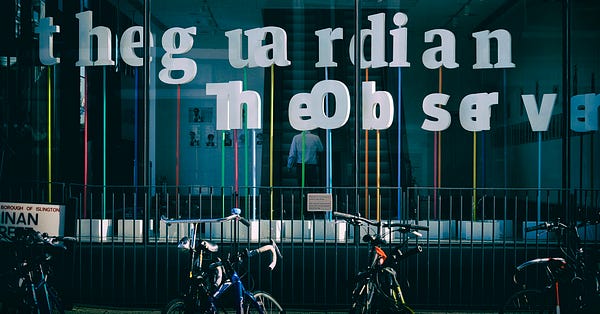
Media silence
So how is it that these newspapers, with their wide-ranging sources inside the intelligence community and their historic investment in the Assange case, heard not a peep about this story over the past four years. Is it possible that not one of the 30 or so officials who spoke to Yahoo has also spoken to these newspapers? Why is Yahoo News the one breaking such an important story?
And maybe even more to the point, how is it that these three newspapers have all but ignored Yahoo’s investigation, and so far appear to be doing nothing to follow it up?
The Guardian could barely stifle a yawn as it covered the story as an extended brief online (and offered a slightly fuller report for its Australian readers). But at least it mentioned the story. I have been unable to find any coverage in either the New York Times or Washington Post.
Is the fact that large numbers of senior US officials are admitting that their agency seriously thought about abducting or murdering a journalist these publications worked with on some of the biggest stories of the modern age not hugely newsworthy for them?
But all of this indifference or aversion to reporting on Assange’s horrifying plight is par for the course for these respected, supposedly liberal media outlets.


Like the rest of the corporate media, they have largely ignored the extradition proceedings going on in the UK courts over the past year and which are due to reach their climax next month when a final hearing is expected.
The media’s continuing silence can only be understood as complicity in the persecution of a fellow journalist.
Colluding with power
The Guardian’s failings have been particularly egregious, as I have documented before (here and here). The paper has barely concealed its vendetta against Assange – much of it following a falling out with him after one of its senior reporters recklessly exposed a Wikileaks password to a cache of classified documents that has been exploited by Washington in building its so-called “espionage” case against Assange.


The Guardian has a vested interest – one it has not disclosed – in keeping the spotlight on Assange rather allowing it to shift to its own role.
That is the context for interpreting its pitifully false and malicious story – again provided by intelligence services – tying Assange to a supposed conspiracy between Trump and the Kremlin that has been obsessively advanced by the liberal media.
The Guardian’s report that a Trump aide, Paul Manafort, and unidentified “Russians” repeatedly visited Assange at the embassy, one of the most heavily surveilled spots in the world, without leaving a single trace of their presence should never have made it into print. The simplest checks would have raised dozens of red flags. But the paper has chosen silence rather than correcting or withdrawing the story.

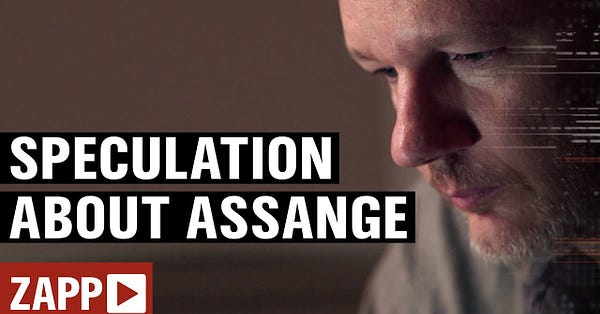
The only conclusion one can draw from their behaviour is that the liberal media, far from being watchdogs on power, regard themselves as adjuncts of power. They feel much closer to the countries’ secret, duplicity-dealing, murderous intelligence services than they do to a fellow journalist being hounded into permanent incarceration.
Net widens
3. The Yahoo report makes clear that the surveillance operation against Assange and Wikileaks intensified dramatically after Snowden released his confidential documents in 2013 in collaboration with reporter Glenn Greenwald.
The Snowden files showed that the US had begun expanding its ambition to use new digital technology to covertly surveil the rest of the world. Now it was increasingly turning that technological prowess inwards to covertly surveil its own population.
A transparency organisation like Wikileaks, it quickly became obvious, was a major threat to the US intelligence services’ plans.
According to Yahoo’s sources, it was the Obama administration that began surveilling Wikileaks more intensively and threw the net wider to expose its networks.
The CIA was already centrally involved, creating a special “Wikileaks team” that worked closely with other friendly spy agencies – including one can presume the Five Eyes intelligence-sharing states that also comprise Canada, the UK, Australia and New Zealand. (One official, William Evanina, who recently retired as a top US counterintelligence official, notes the key role the Five Eyes group played in Assange’s case.)
The goal, Yahoo was told by Evanina, its main named source, was to “tie [Wikileaks] back to hostile state intelligence services”. In other words, the aim was to suggest not that Assange was interested in transparency or acting out of principle but that he wanted to undermine the US on behalf of a hostile foreign power.
Assange’s fate was sealed within the Obama administration in summer 2016 when Wikileaks released a cache of Democratic party emails that cast Obama’s chosen successor, Hillary Clinton, in a damning light and showed that the party had rigged its election procedures to stop her main challenger, Bernie Sanders, from winning.
As an aside, the Yahoo report notes that the idea of kidnapping Assange – in violation of Ecuador and the UK’s sovereignty – actually preceded Pompeo’s arrival at the CIA.
Despite Yahoo’s focus on Pompeo, it was actually Obama and the Democratic party’s thirst for vengeance that paved the way for Trump’s appointee to have viable options of either prosecuting Assange for espionage or abducting him.
Obama’s officials immediately tarred Assange as conspiring with Donald Trump, Clinton’s rival for the presidential election. He was thereby dragged into an establishment conspiracy theory, Russiagate, that claimed Trump was serving as a puppet of the Kremlin.
Given the many years, spent under both Obama and Trump, trying to shore up this claim by the most digitally advanced states in the world, it comes as something of a surprise to learn that they came up with nothing.
Evidence of Wikileaks collusion with Russia appears never to have surfaced, even though it became an implicit, driving assumption behind the Russiagate claims.
One unusually honest official, Robert Litt, a former general counsel of the Office of the Director for National Intelligence, observed to Yahoo of the claims made by Pompeo that Assange was acting on behalf of the Russians: “Based on the information that I had seen, I thought he was out over his skis on that.”
Special counsel Robert Mueller found no evidence to back up such a claim. The extradition hearings in London made no plausible case for it either.
The only tangible piece of evidence is the Guardian’s Manafort story mentioned earlier, which proved so embarrassingly ridiculous everyone involved has tried to quietly forget about it.
House of cards
If there was really a case that Assange and Wikileaks were working hand in glove with the Kremlin, it is hard to imagine that no trace of that collusion was ever found.
Instead, Washington built much of its espionage case against Assange on the testimony of Sigurdur Thordarson, a convicted paedophile and financial fraudster, as well as an FBI asset. He now admits his testimony was a fabrication, and that he lied after he was promised immunity from prosecution.

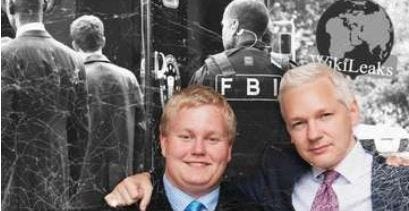
The entire case against Assange has been shown to be a house cards.
Interestingly, Yahoo News’ report shows that, despite the void of evidence, justice department officials were keen to concoct a “legal” case to forestall two dangers that might undermine their efforts to keep Assange incarcerated and preclude them from launching a credible prosecution.
The first was the CIA’s unhinged scenarios that included rendition or a possible Hollywood-style gun battle on the streets of London to prevent Ecuador helping Assange escape the embassy. Were the CIA to be successful, justice department officials fretted, Assange might arrive in the US without any formal or plausible charges levelled against him.
The other was that the UK was rapidly running out of pretexts to keep Assange locked out of view, after London police had been allowed to drag him from the embassy in early 2019. (Ecuador’s new president had changed official policy on sheltering Assange, shortly after the IMF agreed an enormous $4.2 billion loan.)
Sweden had already dropped its investigation of Assange in May 2017. So Assange was moved to Belmarsh maximum-security prison on charges relating to a minor bail infraction. Those charges ignored the fact that he had violated his bail conditions only because he was seeking political asylum, as recognised in international law.
The UK judge issued the maximum sentence possible for such an infraction, giving the US time to formulate the espionage case that has provided the pretext for keeping him locked up ever since, in conditions during a pandemic that have put his life at risk.

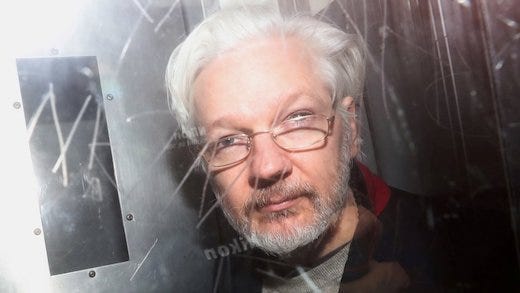
British collusion
4. Did the UK conspire with the US in all this? The massive police presence around the embassy; the British government’s illegal threats to invade Ecuador’s embassy; the original, highly irregular ruling on extradition; the threatening emails from state prosecutors to Sweden; the complicity in holding Assange in a maximum security prison in London on a debatable bail infraction; and the known role of the Five Eyes group of which the UK is a key member, all strongly suggest it was.
Yahoo reports:
Former officials differ on how much the UK government knew about the CIA’s rendition plans for Assange, but at some point, American officials did raise the issue with their British counterparts.
In other words, yes, the UK did know about the most unlawful parts of the CIA’s plans. The question is only how closely was it involved.
One former counter-intelligence official observed:
There was a discussion with the Brits about turning the other cheek or looking the other way when a team of guys went inside and did a rendition. But the British said, ‘No way, you’re not doing that on our territory, that ain’t happening.’
The UK could not afford to look publicly complict in illegal US actions that would have treated the streets of London no differently from those of Mogadishu. Instead, all the evidence suggests that Britain conspired repeatedly over a decade to help the US turn its illegal campaign against Assange and Wikileaks into a seemingly “lawful” extradition process through the courts.
Again, according to the Yahoo report:
White House officials developed a backup plan: The British would hold Assange on a bail jumping charge, giving Justice Department prosecutors a 48-hour delay to rush through an indictment.
In other words, the UK explicitly followed US instructions in holding Assange over a minor bail infraction.
Evanina confirmed the UK’s collusion with the US efforts to keep Assange permanently incarcerated, telling Yahoo that the pair developed a “joint plan” to prevent Assange being able to walk free from the embassy.

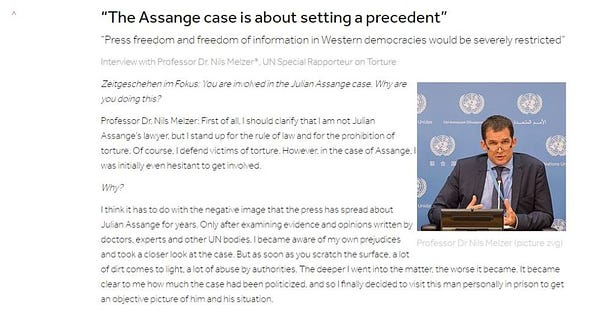
Terrifying truth
The truth is that, appalling as the Yahoo News revelations are, they fail to convey the reality that the US could count on multiple states, not least the UK, to conspire in providing a “legal” veneer to a decade-long, covert war against Assange and Wikileaks for exposing US war crimes.
Even more frightening, all the evidence suggests that the US was also able to manipulate the legal processes in both Sweden and the UK to engineer Assange’s effective incarceration all that time, and to this day.
And even more terrifying, the same evidence suggests that the establishment, corporate media in several countries could be relied on, at best, to turn a blind eye to a fellow journalist’s persecution and, at worst, to actively conspire in that persecution.
Yahoo News provided a great service in bringing some of the reality about Assange’s persecution to light. But there is much more to unearth. Sadly, our supposed watchdogs on power appear far too busy feeding at the trough to start sniffing out more of the truth.
My work here is entirely reader-supported. If you liked this post or any of the others, please consider sharing it with friends, and making a donation via Paypal or alternatively setting up a monthly direct debit mandate with GoCardless. A complete archive of my writings is available on my website. I can be found on Twitter and Facebook.





